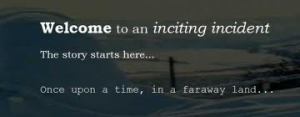Jennifer Scoullar's Blog, page 15
May 14, 2014
Plot Thumbscrews
Time for our monthly chat about writing, with fellow Penguin author Kathryn Ledson, and mentor extraordinaire Sydney Smith. This month we discuss plot thumbscrews.
Sydney:
I love a plot thumbscrew. This is an event where two or more storylines intersect and the difficulty escalates for the protagonist – they find it much harder to get what they want. Characters and their attendant storylines meet all the time in a narrative, but the difference is that a plot thumbscrew escalates the difficulty. The plot veers off in an unexpected new direction because of this difficulty. The protagonist struggles to resolve the conflict in their own favour. I call these tension points “plot thumbscrews” because they tighten until it hurts.
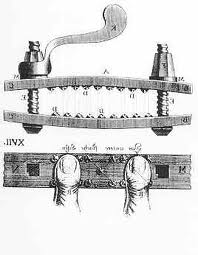 When a novel doesn’t have any plot thumbscrews, the story is monotonous and one-note. People who say that nothing happens in literary fiction are referring to the lack of plot thumbscrews – either too few or none at all. Plot thumbscrews energise a plot by increasing the difficulty. I think of what happens when someone touches an electrified object – they stiffen and are helplessly stuck to the object. This is what happens to the reader when they reach a plot thumbscrew – they stiffen and are helplessly stuck to the story. It hurts the protagonist and it hurts the reader – and the reader loves it! Good plot thumbscrews keep the reader turning the page into the small hours.
When a novel doesn’t have any plot thumbscrews, the story is monotonous and one-note. People who say that nothing happens in literary fiction are referring to the lack of plot thumbscrews – either too few or none at all. Plot thumbscrews energise a plot by increasing the difficulty. I think of what happens when someone touches an electrified object – they stiffen and are helplessly stuck to the object. This is what happens to the reader when they reach a plot thumbscrew – they stiffen and are helplessly stuck to the story. It hurts the protagonist and it hurts the reader – and the reader loves it! Good plot thumbscrews keep the reader turning the page into the small hours.
Jenny:
I’m sorry, but every time I try to write about plot thumbscrews in my current work in progress, I risk giving away spoilers. It’s a novel of romantic suspense. The tension grows gradually, one plot point building on another, each one vital to the next. I’ve analysed my whole story (as much of it as I know so far anyway) and can’t think of one squeeze point that I can discuss without giving the game away. I’m rather pleased actually – it means no dead wood in the story. Either that or I’m paranoid!
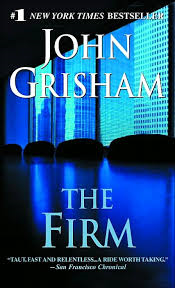 So, I’m going to contribute to this discussion by using an example from another book that has some similarities to my story – The Firm. In this novel by John Grisham, Mitch, an idealistic young lawyer straight out of law school gets his dream job and discovers he has sold his soul to the devil and must fight to get it back. No, seriously, there are parallels!
So, I’m going to contribute to this discussion by using an example from another book that has some similarities to my story – The Firm. In this novel by John Grisham, Mitch, an idealistic young lawyer straight out of law school gets his dream job and discovers he has sold his soul to the devil and must fight to get it back. No, seriously, there are parallels!
A scene that really ratchets up the tension occurs at the midpoint. Shortly after Mitch passes his bar exam, an FBI agent confronts him. Mitch learns that the firm he works for is actually part of the white collar operations of a vicious crime family. They lure new lawyers from poor backgrounds with promises of wealth and security, involving them in multi-million dollar tax-fraud and money laundering schemes. By the time a lawyer is aware of the firm’s actual operations, he cannot leave. No lawyer has escaped the firm alive. The scene brings together three storylines. His suspicions about being followed are confirmed. His search for answers about the other lawyers’ funerals is at an end. And his meteoric career rise is explained and tainted. The scene escalates the external conflict because he is now caught between the Firm which will kill him if he betrays them, and the FBI who will send him to prison if he doesn’t help them. It escalates the internal conflict because he is also caught between ambition and idealism. I’m aiming for something like it in my new book.
Now tell me, Sydney, is that a plot thumbscrew?
Sydney:
That is a fabulous plot thumbscrew! What I didn’t say, and should have said, in my description of what a plot thumbscrew is, is that a plot thumbscrew hands the protagonist a new problem to solve. This is a twist on the old problem. You see how Mitch now understands things better and that hands him a problem that twists the old one. In the old one, he’s trying to find out what’s going on. The new twist is that he’s trapped and has to find a way out. He was always trapped. He just didn’t know it. Now he knows it. AND he knows that getting out is life-threatening. He knows because other lawyers who tried to get out lost their lives. What a terrific plot thumbscrew!
Kath:
Well, Sydney, as you know, my problem is always that I want to protect Erica, my protagonist. Which doesn’t make for very exciting reading, not at all! So for me, writing a plot thumbscrew can be agonising. Probably more so for me than for Erica. But it must be done if we want our readers to be satisfied!
Here I want to talk about a plot thumbscrew in Avatar, a science-fiction/fantasy movie I loved. It’s about paraplegic human, Jake Sully, who is given the job of learning about the Na’vi people so they can either be persuaded into leaving their home (so the humans can mine it for a precious mineral) or, if they refuse to leave, work out how best to drive them off or kill them, as is our human wont. Jake is offered a leg-restoring operation in return for his cooperation.
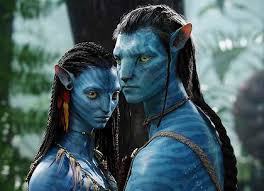 A plot thumbscrew occurs when Jake is separated from his crew and finds himself alone and in grave danger in the jungles of Pandora. There he meets a Na’vi woman who’d quite like to kill him (two storylines clashing), but she receives a sign from their goddess and chooses to help Jake instead. She introduces him to her family, and Jake comes to love the Na’vi people.
A plot thumbscrew occurs when Jake is separated from his crew and finds himself alone and in grave danger in the jungles of Pandora. There he meets a Na’vi woman who’d quite like to kill him (two storylines clashing), but she receives a sign from their goddess and chooses to help Jake instead. She introduces him to her family, and Jake comes to love the Na’vi people.
This of course increases the difficulty for Jake to achieve his goal, which is: drive out the Na’vi or find out how best to kill them. He is falling more and more in love with the Na’vi people, and one lady in particular *sigh*, and so becomes torn, and is eventually forced to choose a side.
It’s not over yet, though. The Na’vi discover Jake’s true purpose and no longer trust him. They leave him for dead. And so, with a new mission in mind, Jake must push through another couple of excruciating plot thumbscrews to save what’s left of the Na’vi and be with his true love – 3½ metres of blue-tailed gorgeousness.
Sydney:
Well, I can see why you call it a plot thumbscrew, Kath. And it is. But the way you describe it de-emphasises the plot thumbscrew. This is how I would put it: Jake wants more than anything to get the use of his legs back. He’s prepared to do anything, which includes finding ways of getting rid of the Na’vi so that an evil corporation can exploit the resources on the Na’vi’s land. He is sent to find out all he can about the Na’vi. But when he meets 3½ metres of blue gorgeousness, he finds himself falling in love with her. He gets to know her people and like them. Now he’s stuck in a bind: if he goes through with his mission, he will get the use of his legs back, but he will lose Blue Gorgeousness and her people will be driven off their traditional lands. But if he saves them, he will be a paraplegic for the rest of his life.
You know what? This sounds like a plot trigger. Plot triggers can look like plot thumbscrews sometimes. Quite often, actually. But this looks like a plot trigger because it kicks off the problem he has to solve. That problem is not his paraplegia but his dilemma: me or the Na’vi?
That just goes to show how tricky it often is to identify plot thumbscrews, even though they arrive with fireworks detonating everywhere. When we remember a film or a novel, we will often remember a plot thumbscrew – like Jane Eyre finding out Mr Rochester is already married, and to a mad woman he keeps in the attic.
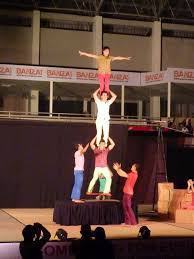 So here’s one way of thinking about it. Remember that old circus trick about the strong man holding up an inverted pyramid of men. The protagonist of the drama is the strong man. His plot trigger happens when two men climb up and stand on his shoulders. His aim is to stay on his feet, supporting the men standing on his shoulders. Then some more men climb up and stand on the shoulders of those two men. Now it’s harder for the strong man to stay on his feet. He staggers this way and that. But he continues to uphold the growing pyramid of men. Then another group of men scale the inverted triangle and mount the shoulders of the men, forming a new row. It is extraordinarily hard for the strong man to hold up all these people and keep his feet. His legs tremble. He grunts with the effort. He stumbles from side to side. But he goes on holding them up because he has to stay on his feet. Each time men climb up to form a new row, that’s a plot thumbscrew. But the first two men who climbed up – that was the plot trigger.
So here’s one way of thinking about it. Remember that old circus trick about the strong man holding up an inverted pyramid of men. The protagonist of the drama is the strong man. His plot trigger happens when two men climb up and stand on his shoulders. His aim is to stay on his feet, supporting the men standing on his shoulders. Then some more men climb up and stand on the shoulders of those two men. Now it’s harder for the strong man to stay on his feet. He staggers this way and that. But he continues to uphold the growing pyramid of men. Then another group of men scale the inverted triangle and mount the shoulders of the men, forming a new row. It is extraordinarily hard for the strong man to hold up all these people and keep his feet. His legs tremble. He grunts with the effort. He stumbles from side to side. But he goes on holding them up because he has to stay on his feet. Each time men climb up to form a new row, that’s a plot thumbscrew. But the first two men who climbed up – that was the plot trigger.
Kath:
Geez. Jenny gets a gold star. I get to sit in the corner.
Sydney:
Reader, Kath awarded Jenny the gold star and put herself in the naughty corner. She didn’t consult me or, as far as I know, Jenny. It’s all her.
Kathryn Ledson is the author of Rough Diamond and Monkey Business (Penguin), part of the Erica Jewell series of romantic adventures. You can visit her website and find her blog at www.kathrynledson.com
Sydney Smith is a writing mentor, teacher and author of short stories, essays, and The Lost Woman, a memoir of survival. She is currently writing The Architecture of Narrative, a book about how to plot and structure fiction. She offers writing tips at www.threekookaburras.com. If you have a question on any aspect of writing, feel free to visit her at The Story Whisperer.

May 11, 2014
Places In The Heart – Williamstown Lit Fest 2014
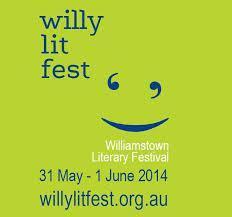 If you live near Melbourne, why not visit the 2014 Williamstown Literary Festival 31st May – 1st June? I will be there, along with my brand new release Billabong Bend which I’m excited to say has gone into reprint before it’s even been released!
If you live near Melbourne, why not visit the 2014 Williamstown Literary Festival 31st May – 1st June? I will be there, along with my brand new release Billabong Bend which I’m excited to say has gone into reprint before it’s even been released!
This year the festival looks at books, stories and ideas around a sense of place. The theme picks up ideas of local community, landscape and our  attachment to home. It will explore our collective memory and myths around ANZAC and Eureka, the role and place of women writers in history and politics, the modern memoir and the fantastical realms of science fiction and gothic horror. Places in the heart will be played out through love poems, a new romantic movement (courtesy of me and my mates!) and creating family legacies via love-laden cook books. The festival boasts a stellar line-up including funny men Sean Micallef and Greg Fleet, comedian and writer Jean Kittson, demographer Bernard Salt and The New Romantics of course!
attachment to home. It will explore our collective memory and myths around ANZAC and Eureka, the role and place of women writers in history and politics, the modern memoir and the fantastical realms of science fiction and gothic horror. Places in the heart will be played out through love poems, a new romantic movement (courtesy of me and my mates!) and creating family legacies via love-laden cook books. The festival boasts a stellar line-up including funny men Sean Micallef and Greg Fleet, comedian and writer Jean Kittson, demographer Bernard Salt and The New Romantics of course!
The New Romantics (a panel consisting of me and three of my author friends) will present a literary discussion of Places In The Heart. We’ll talk about the many facets of love and the important place romance holds in our hearts and in the literary landscape. We’ll talk about power and gender balance in romance, changing tropes of women in romantic fiction and the inspiration for our diverse work. My fellow panel members are:
• Kathryn Ledson – suspense/thriller romance; author of the Erica Jewell series; Rough Diamond and recently released Monkey Business (Penguin)
• Margareta Osborn – rural romance; author of Bella’s Run, Hope’s Road and recently released Mountain Ash (Random House)
• Kate Belle – contemporary women’s fiction/erotic love stories; author of The Yearning and Being Jade to be released in June (Simon & Schuster)
(Can you believe that we’ve all been members of the same writing group for years?)
The New Romantics – Places in the Heart is on Sunday 1 June, 12.00-1.00pm. Adults $15.00, Concession $12.00, Early Bird $10.00 (until midnight Sunday 11 May).
We’d love to see you there! While many of the events on the program are ticketed, there are also free events such as the People’s Choice Awards for prose and poetry, a festival tradition where local writers read their works and the audience votes for a favourite. The festival hub in the newly restored Williamstown Town Hall Ballroom includes a children’s reading area and there’ll also be author signings and book sales. The Willy Lit Fest runs from May 31 to June 1 at the Williamstown Town Hall and Williamstown Library. For program details go to willylitfest.org.au or phone 9932 4074.

May 4, 2014
Hervey Bay
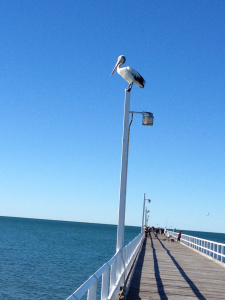 Day 7 of the research trip for my new novel. I visited the beautiful town of Hervey Bay, known as the whale-watching capital of the world. It boasts kilometres of pristine sandy beaches and is part of Great Sandy Marine Park. The park covers 6,000 square kilometres and includes rocky shores, fringing reefs and the waters of world heritage-listed Fraser Island. This island protects Hervey Bay, leading to the formation of shallow bays and sheltered channels, which blend into sea-grass meadows, mudflats and mangroves. These habitats are home to species such as humpback whales, sea turtles, dugongs, dolphins and endangered grey nurse sharks.
Day 7 of the research trip for my new novel. I visited the beautiful town of Hervey Bay, known as the whale-watching capital of the world. It boasts kilometres of pristine sandy beaches and is part of Great Sandy Marine Park. The park covers 6,000 square kilometres and includes rocky shores, fringing reefs and the waters of world heritage-listed Fraser Island. This island protects Hervey Bay, leading to the formation of shallow bays and sheltered channels, which blend into sea-grass meadows, mudflats and mangroves. These habitats are home to species such as humpback whales, sea turtles, dugongs, dolphins and endangered grey nurse sharks.
 Reefworld is a small, family-run aquarium located right on the foreshore of Hervey Bay. Using only sand-filtered sea water and natural light, it has been operating for over thirty years, captivating locals and visitors alike with unique displays of marine life. I spent some time picking the brains of the highly knowledgeable staff who are great conservationists and regularly rehabilitate sea turtles.
Reefworld is a small, family-run aquarium located right on the foreshore of Hervey Bay. Using only sand-filtered sea water and natural light, it has been operating for over thirty years, captivating locals and visitors alike with unique displays of marine life. I spent some time picking the brains of the highly knowledgeable staff who are great conservationists and regularly rehabilitate sea turtles.
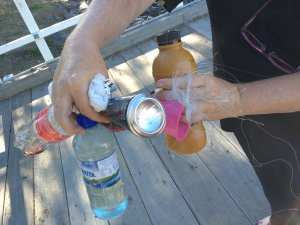 Afterwards I took a walk to the end of historic Urangan Pier – one of the longest in Australia, stretching for almost one kilometre into the ocean. I was rewarded with spectacular views of Hervey Bay, but was also disturbed by the amount of litter left behind by fishermen. Here’s a selection of the rubbish I collected on my pier walk. Lots of discarded fishing line, cans, cigarette butts, plastic … all deadly to marine life, and just minutes away from being blown into the water. How on earth can people be so ignorant and/or reckless, especially in a place renowned for its beauty and biodiversity? It left a bitter taste in my mouth after what had been a perfect day.
Afterwards I took a walk to the end of historic Urangan Pier – one of the longest in Australia, stretching for almost one kilometre into the ocean. I was rewarded with spectacular views of Hervey Bay, but was also disturbed by the amount of litter left behind by fishermen. Here’s a selection of the rubbish I collected on my pier walk. Lots of discarded fishing line, cans, cigarette butts, plastic … all deadly to marine life, and just minutes away from being blown into the water. How on earth can people be so ignorant and/or reckless, especially in a place renowned for its beauty and biodiversity? It left a bitter taste in my mouth after what had been a perfect day.

April 26, 2014
Research Trips
 I’m off tomorrow on a research trip for my new novel, working title Turtle Reef. I know we live in a time where a vast amount of information is at our fingertips through the internet, without even leaving our desk. Books, histories, documentaries and academic journals are available online, and they are invaluable for authors constructing stories set outside their regular world.
I’m off tomorrow on a research trip for my new novel, working title Turtle Reef. I know we live in a time where a vast amount of information is at our fingertips through the internet, without even leaving our desk. Books, histories, documentaries and academic journals are available online, and they are invaluable for authors constructing stories set outside their regular world.
 However it’s still important if possible to physically spend time with a setting to capture it authentically. No amount of reading could convey the true grandeur of the high country, or the enchanted forests of the Bunya Mountains, or the evening beauty of reflected stars in the Murray’s dark waters. It’s enormously helpful for writers to experience these things first hand. Smells are especially hard to grasp without being there. A vivid imagination can create a world, but the eye of a keen observer can truly bring it to life.
However it’s still important if possible to physically spend time with a setting to capture it authentically. No amount of reading could convey the true grandeur of the high country, or the enchanted forests of the Bunya Mountains, or the evening beauty of reflected stars in the Murray’s dark waters. It’s enormously helpful for writers to experience these things first hand. Smells are especially hard to grasp without being there. A vivid imagination can create a world, but the eye of a keen observer can truly bring it to life.
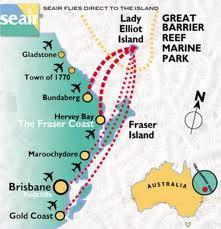 That’s why I’m off to Queensland tomorrow to spend time in cane country, and also on Lady Elliot Island at the southern tip of the Great Barrier Reef. The blurb for my current work-in-progress goes something like this.
That’s why I’m off to Queensland tomorrow to spend time in cane country, and also on Lady Elliot Island at the southern tip of the Great Barrier Reef. The blurb for my current work-in-progress goes something like this.
‘Unlucky-in-love zoologist Zoe King has given up on men. Moving from Sydney to the small sugar town of Kiawa means a fresh start and she is charmed by the region’s beauty – by its rivers and rainforests. By its vast cane fields, sweeping from the foothills down to the rocky coral coast. And by its people – its farmers and fishermen, unhurried and down to earth, proud of their traditions.
Her work at the Reef Centre provides all the passion she needs and Zoe finds a friend in Bridget, the centre’s director. So the last thing she expects is to fall for her boss’s boyfriend, cane king Quinn Cooper. When animals on the reef begin to sicken and die, Zoe’s personal and professional worlds collide. She faces a terrible choice. To protect the reef must she betray the man she loves?’
How fantastic, to be able to spend some more time in this beautiful part of Australia. The manuscript and I are going to have a ball!

April 20, 2014
The Easter Bilby
One of the things I enjoy most about this time of year in Australia, is how a little native marsupial is usurping the rabbit as an Easter symbol. Children see bunnies as fluffy harmless creatures, whereas in reality they are Australia’s greatest environmental feral pest. Rabbits are the single biggest factor in loss of our native species, due to competition for resources, vegetation change and land degradation. Small wonder many Aussies baulk at the Easter bunny!

Bilby
That’s where the endangered bilby comes in, also known as the rabbit-eared bandicoot. Same fluffy cuteness, same long-ears, and strong back legs that give it a half-hopping, half-scurrying gate. “They look like they’ve been stuck together by a committee,” says bilby conservationist, Tony Friend. “Huge ears that belong to a rabbit, soft grey fur, a tail that’s stuck out the back like a tufted pencil, and they gallop around like a rocking horse. They’re so different to any other animals.”
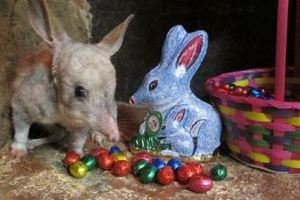 To raise money and increase awareness of conservation efforts, bilby-shaped chocolates and related merchandise are sold within many stores throughout Australia as an alternative to Easter bunnies. Bilby manufactures that donate towards Bilby conservation include Pink Lady and Haigh’s Chocolates. Cadbury’s also produce Chocolate bilbies, although they do not donate or support any bilby conservation projects.
To raise money and increase awareness of conservation efforts, bilby-shaped chocolates and related merchandise are sold within many stores throughout Australia as an alternative to Easter bunnies. Bilby manufactures that donate towards Bilby conservation include Pink Lady and Haigh’s Chocolates. Cadbury’s also produce Chocolate bilbies, although they do not donate or support any bilby conservation projects.
 Many Australian children’s books have been written about Easter bilbies. One of the first was Irena Sibley’s best selling The Bilbies’ First Easter, published by Silver Gum Press. In 1993, Australian children’s author Jeni Bright wrote the story of “Burra Nimu, the Easter Bilby“. It tells how Burra, a shy but brave little bilby, decides to save the land from the rabbits and foxes who are ruining it. Burra and his family and friends gather together for a wonderful time painting Easter eggs to give to the children and ask for their help. But before they can set off on their journey to the children, they must outwit the rabbit army. What a great story!
Many Australian children’s books have been written about Easter bilbies. One of the first was Irena Sibley’s best selling The Bilbies’ First Easter, published by Silver Gum Press. In 1993, Australian children’s author Jeni Bright wrote the story of “Burra Nimu, the Easter Bilby“. It tells how Burra, a shy but brave little bilby, decides to save the land from the rabbits and foxes who are ruining it. Burra and his family and friends gather together for a wonderful time painting Easter eggs to give to the children and ask for their help. But before they can set off on their journey to the children, they must outwit the rabbit army. What a great story!
Until recently, Australia had two species of bilbies – the Greater Bilby and the Lesser Bilby. The Lesser Bilby is already believed to be extinct, and time is running out for its larger cousin. If you want to help, you can sponsor your favourite real live bilby from the gallery and become a Bilby Buddy. Just click here!
Why would anyone buy an Easter bunny when they could buy an Aussie Easter bilby?

April 15, 2014
Plot Triggers
Time for our monthly chat about writing, with fellow Penguin author Kathryn Ledson, and mentor extraordinaire Sydney Smith. This month we discuss plot triggers and try to define them.
Kath: A plot trigger (or inciting incident) launches the story. It’s the protagonist’s call to action – the thing that sets the story in motion and gives our protagonist a problem to solve. Anything before the plot trigger is scene setting, characterisation, back story, etc. A plot trigger can come in many forms. The discovery of a body, a letter in the mail, a desperate plea on the telephone, perhaps even a conversation or epiphany. For example, a husband suggests to his wife that they start a family. She realises in that moment that the last thing she wants is to be married with children! She packs her bags and leaves, and starts her search for the meaning of life.
Jennifer: A plot trigger is something beyond the control of the main character, which sparks off the story. A hurricane carries Dorothy’s house to the Land of Oz. Lucy discovers the wardrobe that leads to Narnia. A mysterious letter arrives at Harry Potter’s house. It changes the course of the hero’s everyday life and, as Kathryn says, usually results in some sort of a quest. It’s the reason why the author chose to begin the story on that particular day in the hero’s life.
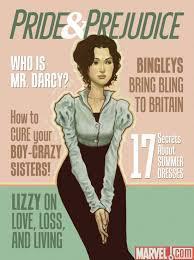 Sydney: Sorry, Jenny, but we have to be really careful to distinguish between a plot trigger (an event that hands the protagonist a problem they have to solve during the course of the story, and which also activates an antagonist) and the event or situation that opens the story. The two can be the same thing – but aren’t always. The event that opens Pride and Prejudice is the news that a rich young bachelor has entered the neighbourhood. ‘What a fine thing for our girls!’ cries Mrs Bennet, starting her goal. Now she sets out to snare him for one of her penniless, unmarried daughters. But what is Elizabeth’s? It’s best to think of it coming in two parts. The first part is the realisation that her sister Jane is sincerely attached to Mr Bingley and vice versa, that their attraction is real and deep, and that she wants more than anything to see the pair married. This happens in Chapter 18, at the Netherfield ball. What is Mr Darcy’s plot trigger? It’s the appalling realisation, courtesy of Mrs Bennet’s boasting, that his friend Bingley has fallen for Jane, a nice girl in herself but a member of a shockingly vulgar family. He wants more than anything to prevent the match, thus keeping him free of lowly connections. That happens in Chapter 18, too, and constitutes the second part of the plot trigger. A plot trigger activates the antagonist as well as the protagonist who now has a goal to pursue. Mrs Bennet’s antagonist is circumstance – she has to plot and scheme to bring Jane and Bingley together. Hence the infamous episode where she sends her daughter on horseback to spend the day with the Bingley sisters. Jane is drenched to the skin, falls sick and must spend five days there. Elizabeth’s antagonist is Mr Darcy and she is his. Their opposition has been activated at the same time. He does everything he can to prevent the match while she does everything she can to promote it. Each creates an obstacle for the other; each stands in the way of the other as they seek to get what they want. This is a plot trigger. Or rather, it’s two plot triggers, those of Elizabeth and Darcy. They are vitally connected.
Sydney: Sorry, Jenny, but we have to be really careful to distinguish between a plot trigger (an event that hands the protagonist a problem they have to solve during the course of the story, and which also activates an antagonist) and the event or situation that opens the story. The two can be the same thing – but aren’t always. The event that opens Pride and Prejudice is the news that a rich young bachelor has entered the neighbourhood. ‘What a fine thing for our girls!’ cries Mrs Bennet, starting her goal. Now she sets out to snare him for one of her penniless, unmarried daughters. But what is Elizabeth’s? It’s best to think of it coming in two parts. The first part is the realisation that her sister Jane is sincerely attached to Mr Bingley and vice versa, that their attraction is real and deep, and that she wants more than anything to see the pair married. This happens in Chapter 18, at the Netherfield ball. What is Mr Darcy’s plot trigger? It’s the appalling realisation, courtesy of Mrs Bennet’s boasting, that his friend Bingley has fallen for Jane, a nice girl in herself but a member of a shockingly vulgar family. He wants more than anything to prevent the match, thus keeping him free of lowly connections. That happens in Chapter 18, too, and constitutes the second part of the plot trigger. A plot trigger activates the antagonist as well as the protagonist who now has a goal to pursue. Mrs Bennet’s antagonist is circumstance – she has to plot and scheme to bring Jane and Bingley together. Hence the infamous episode where she sends her daughter on horseback to spend the day with the Bingley sisters. Jane is drenched to the skin, falls sick and must spend five days there. Elizabeth’s antagonist is Mr Darcy and she is his. Their opposition has been activated at the same time. He does everything he can to prevent the match while she does everything she can to promote it. Each creates an obstacle for the other; each stands in the way of the other as they seek to get what they want. This is a plot trigger. Or rather, it’s two plot triggers, those of Elizabeth and Darcy. They are vitally connected.
Why is it necessary?
 Kath: Most novels are about a protagonist’s quest to get somewhere, find or achieve something. If it weren’t for the plot trigger, the quest would never come about. There would be no story. The recent animated film Frozen is about a girl’s mission to save her sister from herself. If the sister had stayed in her room and never exposed to the world her special yet dangerous magic talent, she wouldn’t have run away and the sister wouldn’t have had to go after her. In other words, we wouldn’t have a story.
Kath: Most novels are about a protagonist’s quest to get somewhere, find or achieve something. If it weren’t for the plot trigger, the quest would never come about. There would be no story. The recent animated film Frozen is about a girl’s mission to save her sister from herself. If the sister had stayed in her room and never exposed to the world her special yet dangerous magic talent, she wouldn’t have run away and the sister wouldn’t have had to go after her. In other words, we wouldn’t have a story.
Jennifer: Stories are about solving problems. A trigger is necessary to jump-start the plot and change the status quo. Without the arrival of a fairy godmother, Cinderella would still be sweeping the fireplace. If Jack wasn’t paid in beans instead of coins, he’d still be poor and living with his mother. Without that letter, Harry would never get to Hogwarts school for wizards.
Sydney: A plot trigger gives a narrative its aim and “point”. This is what the story is about. When a plot trigger doesn’t happen, or comes in too late, as is often the case in unpublished manuscripts, the reader feels confused and disconnected from the story. They don’t know what it’s about. They’re also bored because there’s no tension of a directed nature. This idea of directed tension is essential. A story can have loads of tension, but if it isn’t directed, the tension is wasted on the reader. A plot trigger focuses the protagonist and therefore the story and gives them purpose.
Do all novels have plot triggers?
Kath: I’m still thinking about it. Meantime …
Jennifer: They have to, don’t they? Something has to happen to set off a chain of events. Simply put, the protagonist then tries to solve a problem, and the antagonist tries to prevent him/her from succeeding. Every story I can think of works this way. Except maybe for stream of consciousness novels like Ulysses by James Joyce. It may have a plot trigger, but I was too confused while reading it to tell
Sydney: Yes, a novel must have a plot trigger to kick off the action. Even stream of consciousness narratives will have an external event that kicks off the internal journey – Mrs Dalloway plans to hold a party, for example. But since the journey here is of the consciousness, the plot trigger might not be dramatic – that is, bring two characters together on opposing sides of a problem. In stream of consciousness, the antagonist is part of the internal life of the character.
Kath, while we were discussing plot triggers before we started writing the blog, you wondered whether literary fiction uses plot triggers. I said they do. Jenny is on the button when she says why. But while genre fiction often has to stick to a convention in this regard, literary fiction can play fast and loose with its plot triggers. In crime fiction, the body has to appear in the first chapter, for example. In a romance, the hero and heroine have to meet in the first or second chapter. Science fiction has to do something sci-fi in its opening chapter, or feature sci-fi things like transponders or teleporters. Fantasy fiction must have fantastical features in its first chapter, like dragons or magical orbs or characters coping with a winter that is already ten years old. I call this stuff décor. Décor tells the reader what kind of story they are reading. Even though they have started reading it because the blurb has assured them it’s their kind of story, they want the reinforcement that décor provides.
Literary fiction has décor, too, but is harder to pin down because it’s doing other things. Likewise, literary fiction can play fast and loose with plot triggers, what they look like and where they happen. I talked about Elizabeth’s plot trigger in Pride and Prejudice, which happens a long way into the action, relatively speaking. There is a very good reason for that. If Jane Austen had set Elizabeth’s plot trigger in Chapter 1, she would have had a problem: how can she convince the reader that Jane is sincerely attached to Mr Bingley and vice versa? She’s got another problem: how can she convince the reader that Elizabeth’s hostility to Mr Darcy is real and believable, not merely a plot convention or device? Elizabeth’s hostility to Darcy is essential to the tension between them, and the tension surrounding their views on a match between her sister and his friend. If Jane Austen had put their plot triggers in Chapter 1, she would have lost the reader, who wouldn’t believe it. So she set up Mrs Bennet’s plot trigger to kick off the story and give it energy and focus until it was time for Elizabeth’s and Darcy’s to kick in. Notice that Mrs Bennet’s Machiavellian schemes re Jane and Bingley tail off after that. They are no longer necessary to keep the narrative ship on course. Jane Austen has to do a number of other things, too, before Elizabeth and Darcy can have their plot triggers, like bringing in Mr Wickham, whose plot trigger happens when he sees Darcy in Meryton and sets out to ruin his life socially in that neighbourhood. Everything Jane Austen puts in place before Elizabeth’s and Darcy’s plot triggers is essential to the machinery, if you like, of the novel, to make sure it all runs smoothly.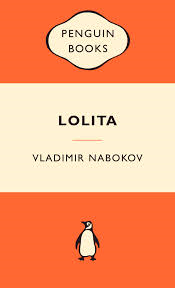 In Lolita, Humbert’s plot trigger happens when he sees the child he calls Lolita. This happens at the end of chapter 10, forty pages into the novel. Why didn’t Nabokov place it in the first chapter? Because without Humbert’s history of paedophilia and his justification for it, the plot trigger would have been meaningless. And yet the story needs to keep the reader interested before the plot trigger is pulled. And it has to be done in such a way that the plot trigger makes sense. So, Humbert describes his pursuit of sex with little girls, and his ignominious defeats, until he walks into a house in Middle America and sees Dolly Haze, the girl he plans to trample over like the Nazis trampling over Poland.
In Lolita, Humbert’s plot trigger happens when he sees the child he calls Lolita. This happens at the end of chapter 10, forty pages into the novel. Why didn’t Nabokov place it in the first chapter? Because without Humbert’s history of paedophilia and his justification for it, the plot trigger would have been meaningless. And yet the story needs to keep the reader interested before the plot trigger is pulled. And it has to be done in such a way that the plot trigger makes sense. So, Humbert describes his pursuit of sex with little girls, and his ignominious defeats, until he walks into a house in Middle America and sees Dolly Haze, the girl he plans to trample over like the Nazis trampling over Poland.
Kath: How clever of me to handball that to Sydney!
Sydney: Where would I be without your cleverness, Kath? Groping for something to say, that’s where!
Where are the plot triggers in your novels?
Kath: In my first novel, Rough Diamond, the plot trigger happens on the first page – the protagonist Erica Jewell arrives home to find a man bleeding to death in her front garden. There was a potential problem in starting this way because we didn’t yet know Erica well enough to understand her actions in this situation. Most readers were ok with it – my publisher certainly was – but if I were to do it again, I’d probably show Erica in her ordinary world first. That said, a high-octane scene to open is certainly a great hook for the reader.
In Monkey Business, we’re about 13,000 words into the story before the plot trigger (a telephone call) sends Erica on her mission to find Jack, who is missing in action. Because this is part of a series, and yet the novel must still be able to stand on its own, scene-setting and back story were important.
Likewise in Grand Slam (working title for no. 3 in the series). Again we’re over 10,000 words into the story before the trigger (an explosion on an oil rig). There are several sub-plots and it’s important to set those up before the action starts.
Jennifer: I believe in inserting plot triggers right up front, to capture the reader’s interest quickly. In my first novel, Wasp Season, the plot trigger occurs in the first paragraph with Zenandra, the European wasp queen, choosing a nesting site in Beth’s fallen tree. That’s when all the trouble begins.
In Brumby’s Run it’s in the prologue, when we learn that Mary had to give up one of her newborn twins for adoption.
In Currawong Creek it’s in the first chapter, when a four year old boy is left behind in Clare’s office.
In Billabong Bend it’s in the second chapter (late for me) when Nina meets a mysterious stranger at a masquerade ball. No, maybe it’s earlier. In the first chapter, when we learn that the rare wetlands along the Bunyip River are in danger, and that Nina is determined to protect them.
And in my current novel, Turtle Reef, it’s at the end of the first chapter, when Zoe gets a phone call offering her a job as a marine researcher.
Sydney: A plot trigger, if it’s to qualify as such, has to offer the protagonist a problem that gets in the way of their goal. After all, a plot is created by the protagonist working to solve a problem. That problem is embodied in the antagonist, or a group of antagonists. Elizabeth wants to see Jane married to Mr Bingley, but she must work on the problem created by Caroline Bingley and Darcy, who oppose the match. Humbert wants to get his hands on Dolly Haze, but must work against the problem caused by Charlotte, Dolly’s mother, who keeps edging herself between Humbert and the child. He also must work against the law: sex between adult and child is illegal.
If a plot trigger is to work, it must not only begin with an event, it must involve an antagonist. If those two things are not there, the event is not a plot trigger. It’s something else, which can also be important but is not the plot trigger. A standard example is a crime novel, which opens with a dead body. The corpse brings together the detective AND the killer, each of whom is working on opposing sides of a problem. The detective wants to find the killer, the killer wants to avoid detection. Thus, discovery of the body is a plot trigger. It isn’t a plot trigger if it doesn’t involve an antagonist.
Jennifer: I thought a plot trigger (an event) was different to an inciting incident ( the call to action that engages the hero). Although as you point out, Sydney, they are sometimes one and the same. Maybe I’ve got my definitions wrong.
Sydney: The term “inciting incident” comes from writing screenplays. There’s nothing wrong with borrowing terms from another form, as long as you keep in mind that it IS another form. In movies, the plot trigger comes in between eighteen and twenty-five minutes into the film. You can time it. Viewers come to expect this. It’s a convention of movies across the board, from genre to arthouse, from Hollywood to independent to European to Asian. Plot triggers in fiction are not so convention-bound, outside certain kinds of genre novels.

April 6, 2014
A Victory For Whales
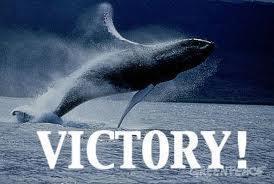 Last week the International Court of Justice upheld Australia’s bid to ban Japan’s Antarctic whaling program. Australia argued that the program was commercial whaling in disguise. It was a great day for whales and Tokyo’s ‘scientific whaling’ was finally exposed as a fraud. Japan said it would abide by the decision which is considered legally binding.
Last week the International Court of Justice upheld Australia’s bid to ban Japan’s Antarctic whaling program. Australia argued that the program was commercial whaling in disguise. It was a great day for whales and Tokyo’s ‘scientific whaling’ was finally exposed as a fraud. Japan said it would abide by the decision which is considered legally binding.
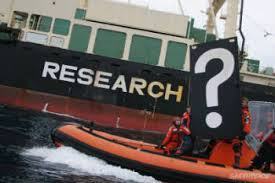 Founder of Sea Shepherd Conservation Society, Paul Watson, says the court’s decision justified the group’s sometimes courageous actions at sea. “I am so pleased that after a decade of anti-whaling campaigns in the Antarctic and Southern Ocean, we won’t have to go there again,” he said from his home in Vermont. “We feel vindicated, this has always been an illegal whale hunt, I’ve always felt that way and for the the International Court of Justice to agree and for people to see that this has been the right thing to pursue, well, that’s just great.”
Founder of Sea Shepherd Conservation Society, Paul Watson, says the court’s decision justified the group’s sometimes courageous actions at sea. “I am so pleased that after a decade of anti-whaling campaigns in the Antarctic and Southern Ocean, we won’t have to go there again,” he said from his home in Vermont. “We feel vindicated, this has always been an illegal whale hunt, I’ve always felt that way and for the the International Court of Justice to agree and for people to see that this has been the right thing to pursue, well, that’s just great.”
Advertisement
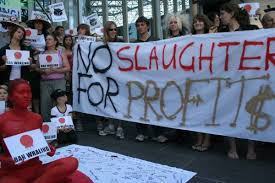 Former Greens leader and director of Sea Shepherd Australia, Bob Brown, listened to the court’s judgment on his car radio in Tasmania and was ready for the worst, he said. “I stopped by the side of the Midland Highway,” Dr Brown said. “I’m used to very long judgments going right back to the Franklin Dam court case, and I’m used to hearing the bad side first up, and the good side last. I was surprised and extremely pleased at how clear and unqualified the ruling was. Of course, the Sea Shepherd stands ready for immediate reaction, stands ready to go in case Japan changes its mind.”
Former Greens leader and director of Sea Shepherd Australia, Bob Brown, listened to the court’s judgment on his car radio in Tasmania and was ready for the worst, he said. “I stopped by the side of the Midland Highway,” Dr Brown said. “I’m used to very long judgments going right back to the Franklin Dam court case, and I’m used to hearing the bad side first up, and the good side last. I was surprised and extremely pleased at how clear and unqualified the ruling was. Of course, the Sea Shepherd stands ready for immediate reaction, stands ready to go in case Japan changes its mind.”
 Sea Shepherd is now challenging the Western Australian government’s decision to cull sharks off its coast in court, an action Dr Brown described as “absurd and bloody “It is almost unbelievable that in this day and age in Australia it would be happening. It destroys the fragile ecosystem and most of these sharks are already threatened.”
Sea Shepherd is now challenging the Western Australian government’s decision to cull sharks off its coast in court, an action Dr Brown described as “absurd and bloody “It is almost unbelievable that in this day and age in Australia it would be happening. It destroys the fragile ecosystem and most of these sharks are already threatened.”
So I pay tribute to everyone who has worked so hard to bring about this terrific result. The Rudd government for instigating the action against Japan at the Hague way back in 2010. Former attorney-general Mark Dreyfus for his stellar prosecution of Australia’s case. And the Sea Shepherd, for facing the Japanese whaling fleet head on each summer, risking their lives while most of us were enjoying a Christmas break. Thank you!
For those of you near Melbourne, why not come and welcome the Bob Barker and crew as they finally return home to Williamstown after enduring the longest and most successful Antarctic campaigns to date.
The ship will join the Sam Simon & the Steve Irwin docked at Seaworks.
When: Wednesday 9th April – current ETA is 9am approximately. Check out Sea Shepherd’s Facebook page for possible changes to this arrival time.
Where: Sea Shepherd Australia Operations Base – Seaworks, 2 Ann Street, Williamstown, Victoria.

March 29, 2014
Lights Out For The Reef
 Last night thousands of Australians, including me, took part in Earth Hour, an event that kicked off a year-round campaign against climate change. It is a worldwide movement for the planet organized by the World Wide Fund for Nature (WWF) and it began right here in Australia as a lights off hour in 2007. Earth Hour engages a massive mainstream community on a broad range of environmental issues. Households and businesses turn off their non-essential lights for one hour as a symbol of their commitment to the planet. The event has now been embraced by 7001 cities and 152 nations across the globe. And in 2014, Earth Hour will focus attention on one of the world’s most iconic and threatened places: Australia’s Great Barrier Reef.
Last night thousands of Australians, including me, took part in Earth Hour, an event that kicked off a year-round campaign against climate change. It is a worldwide movement for the planet organized by the World Wide Fund for Nature (WWF) and it began right here in Australia as a lights off hour in 2007. Earth Hour engages a massive mainstream community on a broad range of environmental issues. Households and businesses turn off their non-essential lights for one hour as a symbol of their commitment to the planet. The event has now been embraced by 7001 cities and 152 nations across the globe. And in 2014, Earth Hour will focus attention on one of the world’s most iconic and threatened places: Australia’s Great Barrier Reef.
 This topic holds particular significance to me, as the new novel I’m writing is set on the Queensland coast at the southern tip of the reef. It is about a zoologist with a passion for marine mammals. As the largest living structure on the planet, the Great Barrier Reef stretches for over two thousand, three hundred kilometres, and is so large it can be seen from space. It contains three thousand individual reefs and nine hundred islands. Incredibly rich and diverse, it extends over fourteen degrees of latitude, from shallow estuarine areas to deep oceanic waters.
This topic holds particular significance to me, as the new novel I’m writing is set on the Queensland coast at the southern tip of the reef. It is about a zoologist with a passion for marine mammals. As the largest living structure on the planet, the Great Barrier Reef stretches for over two thousand, three hundred kilometres, and is so large it can be seen from space. It contains three thousand individual reefs and nine hundred islands. Incredibly rich and diverse, it extends over fourteen degrees of latitude, from shallow estuarine areas to deep oceanic waters.
 Channel ten screened a special television event last night just prior to Earth Hour. It revealed the true story of what’s happening to the reef due to climate change, dredging, pollution and over-fishing. The program was grim viewing. The Great Barrier Reef has shrunk by fifty percent in the last twenty-seven years. Let’s hope 2014 can mark a rally to action, and we can convince politicians to protect this unique wonder of the natural world.
Channel ten screened a special television event last night just prior to Earth Hour. It revealed the true story of what’s happening to the reef due to climate change, dredging, pollution and over-fishing. The program was grim viewing. The Great Barrier Reef has shrunk by fifty percent in the last twenty-seven years. Let’s hope 2014 can mark a rally to action, and we can convince politicians to protect this unique wonder of the natural world.
And now to the winners of the prize draw. Congratulations to Karen Stalker, Mary Preston and Jenna O. You have each won a book. I’ll be emailing you all shortly.

March 22, 2014
Structuring A Story
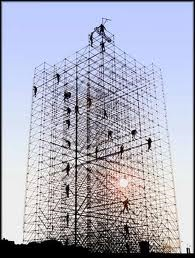 I’m at the start of a new book, about ten thousand or so words in. Needless to say, I’m giving a lot of thought to the invisible framework upon which the story will hang. My Penguin editors talk a lot about structure. In fact, the first and most crucial round of editing, the structural edit, is devoted entirely to the architecture of the narrative. Yet oddly enough, many writing workshops rarely seem to discuss this subject. (Apologies to Sydney Smith the story whisperer, for stealing that architecture of the narrative line. It’s from the title of her forthcoming how-to book. Sydney could never be accused of ignoring the importance of structure!)
I’m at the start of a new book, about ten thousand or so words in. Needless to say, I’m giving a lot of thought to the invisible framework upon which the story will hang. My Penguin editors talk a lot about structure. In fact, the first and most crucial round of editing, the structural edit, is devoted entirely to the architecture of the narrative. Yet oddly enough, many writing workshops rarely seem to discuss this subject. (Apologies to Sydney Smith the story whisperer, for stealing that architecture of the narrative line. It’s from the title of her forthcoming how-to book. Sydney could never be accused of ignoring the importance of structure!)
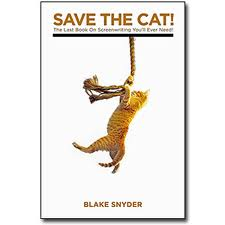 Other aspects of story such as characterisation, plot and pace for example are talked about all the time. But fixing up your characters or adjusting the pace of your plot won’t save a story if it’s structurally flawed. I roughly follow the three-act structure, much beloved of modern screen writers and ancient storytellers. Knowing how to structure a novel won’t stop it evolving organically, but it will save a lot of time later on. There are plenty of books outlining this method. I’ve previously blogged about my two favourites. Save The Cat by Blake Snyder and Alexandra Sokoloff’s fabulous Screenwriting Tips For Authors. However sometimes I forget, and breaking into a writing session to consult a text can really halt your momentum. So even though I’m a pantster at heart, I always keep a few basic elements of story-telling structure in my mind as I write.
Other aspects of story such as characterisation, plot and pace for example are talked about all the time. But fixing up your characters or adjusting the pace of your plot won’t save a story if it’s structurally flawed. I roughly follow the three-act structure, much beloved of modern screen writers and ancient storytellers. Knowing how to structure a novel won’t stop it evolving organically, but it will save a lot of time later on. There are plenty of books outlining this method. I’ve previously blogged about my two favourites. Save The Cat by Blake Snyder and Alexandra Sokoloff’s fabulous Screenwriting Tips For Authors. However sometimes I forget, and breaking into a writing session to consult a text can really halt your momentum. So even though I’m a pantster at heart, I always keep a few basic elements of story-telling structure in my mind as I write.
1. The first turning point or inciting incident.
This needs to happen quickly, ideally in the first few pages. It’s the event that sets the plot in motion, a departure from our main character’s normal life. But in order for it to have maximum impact, you have to establish what normal actually is i.e. what is the character expecting to happen. If our hero is a teacher, she expects to find a classroom full of students when she goes to work. If our hero is a prisoner, she expects to be locked up. What if the teacher’s class is missing, or the prisoner’s cell is open? A choice is then forced on the protagonist. Beginning writers often open with fast-paced scenes that don’t mean much. Readers can only appreciate the unusual if they understand the normal.
 2. Lots more turning points.
2. Lots more turning points.
With a rough, three act structure there are generally three big turning points and lots of little ones, to ensure the story gets increasingly complicated. They happen when a character solves one problem, only to find they are faced with another, thus ratcheting up the tension. The big ones come at the end of each act and the final one brings resolution.
3. Character arcs.
Our hero must learn and change, and overcome inner and outer conflict. This is true of other main characters as well. The simplest way to make this happen is to establish their character flaw early on, and ensure they overcome it by the end. In my new novel Turtle Reef, my protagonist’s flaw is naivety - a willingness to trust too much, too soon. This often blinds her to the truth. Once you can name your character’s main flaw, it’s easier to write scenes that exploit it. Characters can learn things about themselves in all sorts of ways. There is the dramatic epiphany, the series of small insights, the recognition of themselves in someone else (not too early on of course!) Stories will resonate more with readers when characters grow and change.
4. Resolve things
Establish a new normal at the end. Or it could be returning to the old normal, but in any case, the mess you’ve created should be cleaned up somehow. Readers will be dissatisfied with a story that isn’t resolved well
So these are the simple guidelines I always keep in mind while writing. Every single scene is interrogated in reference to them, and if it doesn’t further the plot or a character arc, the scene is out, no matter how pretty the prose. It’s a lot easier to keep the elements of structure in mind while writing, than to be confronted with a whopping big structural report from your editor at the end, pointing out all the flaws in your story!
Don’t forget there’s still time to enter the book giveaway. Just leave a comment telling me who is your favourite fictional bad guy! Winners announced 30th March.

March 14, 2014
What Makes A Good Antagonist? – Plus Book Giveaway!
 Welcome to our cross-blog, which offers tips on writing. Every month writing mentor Sydney Smith ‘interviews’ author Kathryn Ledson and me on some aspect of the writing craft. We welcome your questions and comments. To celebrate my nomination for the Australian Writer’s Centre Best Australian Blogs 2014 (and also for reaching 30,000 views on my website!) I’m giving away a signed copy each of Wasp Season, Brumby’s Run and Currawong Creek. To go in the draw, leave a comment telling us who is your favourite fictional bad guy! (Aust & NZ residents only)
Welcome to our cross-blog, which offers tips on writing. Every month writing mentor Sydney Smith ‘interviews’ author Kathryn Ledson and me on some aspect of the writing craft. We welcome your questions and comments. To celebrate my nomination for the Australian Writer’s Centre Best Australian Blogs 2014 (and also for reaching 30,000 views on my website!) I’m giving away a signed copy each of Wasp Season, Brumby’s Run and Currawong Creek. To go in the draw, leave a comment telling us who is your favourite fictional bad guy! (Aust & NZ residents only)
This month’s question is: What makes a good antagonist?
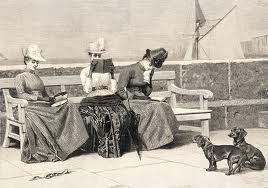 According to Wikipedia, “An antagonist is a person or group of people who oppose the main character.” But the antagonist can also be non-human. It can be a dragon, a Martian, a volcano, a disease like Parkinson’s; anything that opposes the protagonist.
According to Wikipedia, “An antagonist is a person or group of people who oppose the main character.” But the antagonist can also be non-human. It can be a dragon, a Martian, a volcano, a disease like Parkinson’s; anything that opposes the protagonist.
Sydney:
An antagonist is a broader and more complex idea than a villain. A villain acts for purely selfish reasons and does destructive things with no consideration for the effect they will have on others. A villain is wicked. A villain is unable to change and grow.
An antagonist, on the other hand, is a character who pursues a certain goal in the story. This goal opposes that of the protagonist. In Pride and Prejudice, Mr Darcy is Elizabeth’s main antagonist until after the first proposal scene. But it is Mr Wickham who is the villain, and he doesn’t emerge in that light until after Mr Darcy sets Elizabeth straight about what really happened between him and Wickham.
Villains have a role in fiction. Crime novels use villains. A serial killer is a villain. Any character who feels entitled to murder to get what they want is a villain. But then we get into a tricky area, because some crime fiction heroes, like Lucas Davenport in John Sandford’s Prey series, feel entitled to shoot dead the killer he has been pursuing.
Jennifer:
Great antagonists make great stories, don’t they? Thwarting our hero at every turn, keeping the reader turning those pages. A compelling antagonist needs to be built with the same care as any other character. Unfortunately, I often read books where the bad guy is underdeveloped, a cardboard cut-out who is simply evil for evil’s sake. For me, an antagonist needs strong motivation and has to have something at stake, ie: needs to be trying to avoid something or gain something. They must be intelligent and adaptable – worthy adversaries. A compelling antagonist must also be flawed in some way, perhaps having a weakness that readers can relate to and even causes readers to be a little torn at times as to where their sympathies lie. I also love them to have secrets. But of course the most important thing is for the antagonist to stand fairly and squarely in the path of our hero.
I’m fascinated by the concept of non-human things being antagonists. I’ve just read The Perfect Storm, a creative non-fiction book by Sebastian Junger, where the weather is a spectacular villain. Literary fiction and commercial women’s fiction often don’t have a clear wrong-doer, but even so they must have someone or something opposed to the hero, or else the narrative drive just falls away. You suggested to me, Sydney, that in my book Currawong Creek the troubled four-year-old boy Jack was the antagonist, because his presence and behaviour constantly gets in the way of my hero’s plans. Whatever or whoever your antagonist may be, it’s worth investing plenty of time on them.
Sydney:
I think part of the problem is that writers think antagonists have to be bad people. This is surely connected to the common fallacy that conflict is negative. A good antagonist, like conflict, feeds the narrative. As you say, Jenny, without a strong antagonist, the story falls away. That’s because there isn’t enough for the hero to do! But an antagonist must do more than give the hero something to do. They have to be focused on what they want. They have to be prepared to do ANYTHING to get it. Stories ramp up the tension and suspense as soon as the main players are prepared to do anything to get what they’re after.
Kathryn:
Like Jennifer, I’m especially fascinated by non-human antagonists because for me their elusive non-humanness makes them even more frightening than your average axe-wielding psycho. The scraping sound in the attic. The jungle and its slithering, crawling, scuttling inhabitants. The house whose walls bleed. Christine. But human or not, one thing that gives an antagonist depth of character is his/her/its own goal, and motivation for it. I’ve learned (thank you, Sydney) that it’s vital for the author to keep this in mind and, as Jen says, just as important as the goal and motivation of the protagonist. Your antagonist’s goal and motivation should be so strong that if the story were written from his point of view, we would be barracking for him!
Let’s look at JAWS as a timely example, where the obvious villain has an apparent goal to eat everyone in that peaceful seaside town, selfishly snatching away and ripping apart whoever dares stick a toe in that water. However, if the story of the terrifying monster shark – let’s call him Bruce – were written from Bruce’s point of view, we’d discover his motivation for that goal. It might be to avenge all the horrible atrocities committed against his family by humans. When he was a tiny sharkling, perhaps he watched his mother being definned and tossed, alive, back into the sea where she spent hours lying on the ocean floor with baby Brucie pleading as she drowned, “Please swim, Mummy!” And she in turn warning him off, “Save yourself, my son!” Perhaps even the Horrible Human that the now fully grown and vengeful Bruce seems hell-bent on devouring is the one who murdered his mother. (Actually, I’m trying to remember the story and something like this might in fact be the case.) Anyway, if Bruce’s story were written well, we’d be standing in the aisles cheering him on! We might even go swimming that summer, knowing Bruce’s friends would be satisfied with their hero’s fine work; that the shark population was now safe from the evil doings of That Terrifying Human.
So you can see that, as a writer, knowing your antagonist’s goal and motivation can really help build its character, even if it’s never openly stated in the writing. But it will surely emerge, and the reader will sense it but possibly not understand why your antagonist is a truly terrifying one.
Sydney:
I totally get where Bruce is coming from. I feel like cheering him on – except that I’m not sure I agree with someone using violence to resolve their conflicts!
Kath has made a good point, though. Whether the non-human antagonist is a shark or a tsunami, anthropomorphising it will allow the reader to identify with it. Whatever the reader may think of this practice, it is effective. Perhaps it also shows the limits of the human imagination that we find it so hard to imagine a being whose psychology is different to our own. Even when we get back to basics – what does this creature need to survive? what does it fear? – we tend to make them human-like in their responses to these needs and dreads. I recall watching District 8, a movie out of South Africa, which uses a colony of aliens to discuss issues of refugees and asylum-seekers (and any marginalised group, really). The film-maker, who also wrote the script, was unable to imagine what it was like to be one of the aliens. His human hero was terrific, but the film fell short when it came to making the alien a riveting and complex character. Which means that the issues the film discussed were let down and undermined by this shortcoming in the movie.
In fact, now I think of it, any one of us can have trouble imagining what it is like to be someone else, human or animal or alien or force of nature, when what is really required of us is to step into the shoes of another being. Surely this is one of the great services fiction offers us all, whether it’s literary or genre: the chance to feel what it’s like to be someone else.
I love anthropomorphising! And Kathryn, you almost made me cry with your image of baby Bruce urging his poor dying, mutilated mother to swim … Readers, don’t forget to tell us your favourite bad guy for your chance to win books! Winners announced 30th March.
Kathryn Ledson is the author of Rough Diamond and Monkey Business (Penguin), part of the Erica Jewell series of romantic adventures. You can visit her website and find her blog at www.kathrynledson.com
Sydney Smith is a writing mentor, teacher and author of short stories, essays, and The Lost Woman, a memoir of survival. She is currently writing The Architecture of Narrative, a book about how to plot and structure fiction. She offers writing tips at www.threekookaburras.com. If you have a question on any aspect of writing, feel free to visit her at The Story Whisperer.




